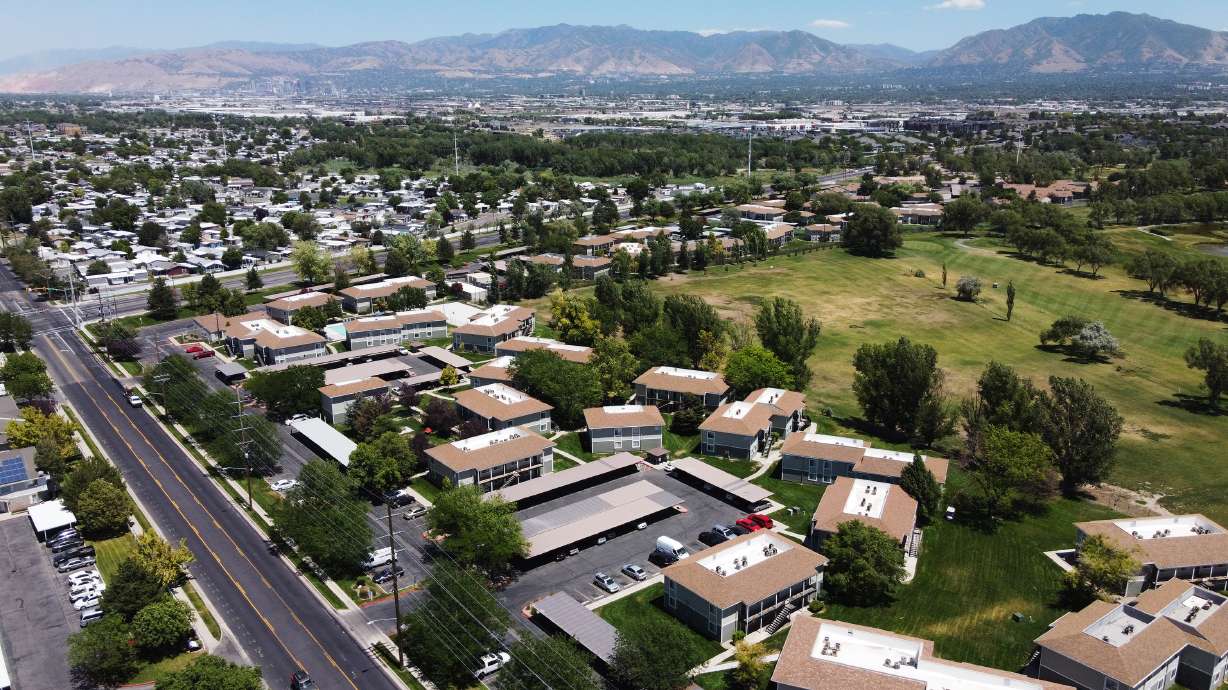Estimated read time: 4-5 minutes
This archived news story is available only for your personal, non-commercial use. Information in the story may be outdated or superseded by additional information. Reading or replaying the story in its archived form does not constitute a republication of the story.
SALT LAKE CITY — A Utah homeowner loan bill took effect Tuesday, allocating $50 million in funding to provide thousands of Utahns with $20,000 loans to purchase a new home.
Utah Senate President Stuart Adams, R-Layton, the sponsor of SB240, First-time Homebuyer Assistance Program, noted that the program is meant to help middle-class families become first-time homeowners and "give people the pride of homeownership."
Those who have not owned a home in the past three years and have lived in Utah for at least one year prior can apply for the loan through the Utah Housing Corporation.
"We're well aware of the fact we have a housing affordability issue, and a lot of the focus has been on trying to reduce apartment rent, and there's been a ton of focus on increasing the number of multiple housing units to be constructed," Adams said.
Applicants must purchase a home up to $450,000, and it must either be newly constructed or never have been lived in.
"We're trying to encourage … builders, developers and cities, municipalities, counties, whoever has the oversight jurisdiction, to try to produce a product under that $450,000 range. A lot of people say you got to raise it up. The reason we won't raise it up or not raising funds for trying to, again, push prices down and provide this affordable housing inventory," Adams said.
The bill will help an estimated 2,400 families — about 10,000 people — Adams added, subsequently taking those individuals out of the Utah rent market and freeing up space for Utah renters.
"You're creating new product for first-time homebuyers. And you're pulling people out of the apartment market which hopefully with supply in both the ownership market and in the rental market, you'll reduce some of the pressure, which will allow pricing to moderate," Adams said.
The homeownership program comes at a time when Utah's rent is climbing — in the last three years, Utah's rent has spiked by 36.4%, with 2020's average rent being $1,530, and 2023's average now $2,087.84, according to Zillow data commissioned by luxury real estate website RubyHome.
In fact, according to 2021 U.S. Census data, Salt Lake City's median income gaps between men and women ($11,160) have created a need for affordable rent for women especially. To afford a one-bedroom apartment in Salt Lake City, women would need an additional $9,374 in their median income — while men have a median income high enough to lose $1,786 and still be able to comfortably afford rent, according to a ChamberofCommerce.org study.
The homebuyers program has already proven successful in pointing people from the rent market and toward homeownership.
Within the first day of the program's implementation, there were 52 applicants, Adams noted — which he said already proves a successful process for the program to bring Utahns new homes, and in the same breath, to decrease rent prices.
"When 52 members applied, that's 52 people either moving out of an apartment or moving into an apartment, so that actually allows for more apartment space. The other benefit is it actually makes less demand for apartment rent or less demand in the apartment market," Adams said. "If you take 52 people out, there's less pressure on raising rents."
Currently, the program will continue until the budget's allocated $50 million runs out, but "if the program is extremely successful and productive, we may actually try to find more (funding)," Adams added.
The program's loan has a 0% interest rate and will not require monthly payments. After the recipient of the program sells or refinances their home, they will refund the loan to the Utah Housing Corporation — allowing other applicants to apply for it, according to Adams.
"We have the best economy, and because of that, we have one of the fastest-growing states in the nation," Adams said. "It's great to have a great economy, and great to be the fastest-growing state in the nation, but we also need to maintain a quality of life. This is an effort to try to maintain the quality of life."








